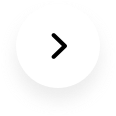Weaving Kiosk
Series of public weaving workshops
Flexible
2017- ongoing
Weaving Kiosk at Boundless Encounters: The 3rd Hangzhou Triennial of Fiber Art
Around the world we find millennia-old traditions in hand weaving that have been developed and refined over time. In its productive function, the manual practice has been supplanted by industry, for which the question arises what place it has today, and what the motives are for which people continue to weave.
Superficially – in view to its materiality, tools, rhythms – hand weaving may appear as an activity more anchored in the past, but through various participatory installations I have been conducting since 2013 I have seen that also in our digital present-day society, people are drawn to this activity for reasons acute in their lives, beyond the physical making.
Observations as to the immaterial affordances of hand weaving, and of making in general, have been made both in the realm of design/craft and philosophy. German Bauhaus weaver Anni Albers e.g. described already in 1937 how weaving as a specific form of material creative work can help modern man find meaning and self-confidence in an increasingly abstract and complex world. In 1974, Austrian philosopher Ivan Illich described how the ability to make things by hand and thereby influencing the tools and processes of production is crucial for humans to connect with others and their inner selves.
In our moment in time, human futures are spread about an arguably unprecedentedly wide and uncertain horizon. Against this uncertainty, the question appears for what motives – what instinctive sensation? what projected purpose? – people choose to engage with a hand weaving space.
For the Boundless Encounters: 2019 Hangzhou Triennial of Fiber Art I will set up an edition of my most recent project, the Weaving Kiosk, which will especially be focused on exploring the question: How do we experience our cultural (environmental, technological, economical, ...) moment in time, and how does the practice of sitting down by a loom play into this picture?
Part of the project will be the conception, development and testing of tools with which to capture, and potentially process, such experience and motivations with the visitors.
Weaving Kiosk
Series of public weaving workshops
Flexible
2017- ongoing
Weaving Kiosk at Boundless Encounters: The 3rd Hangzhou Triennial of Fiber Art
Around the world we find millennia-old traditions in hand weaving that have been developed and refined over time. In its productive function, the manual practice has been supplanted by industry, for which the question arises what place it has today, and what the motives are for which people continue to weave.
Superficially – in view to its materiality, tools, rhythms – hand weaving may appear as an activity more anchored in the past, but through various participatory installations I have been conducting since 2013 I have seen that also in our digital present-day society, people are drawn to this activity for reasons acute in their lives, beyond the physical making.
Observations as to the immaterial affordances of hand weaving, and of making in general, have been made both in the realm of design/craft and philosophy. German Bauhaus weaver Anni Albers e.g. described already in 1937 how weaving as a specific form of material creative work can help modern man find meaning and self-confidence in an increasingly abstract and complex world. In 1974, Austrian philosopher Ivan Illich described how the ability to make things by hand and thereby influencing the tools and processes of production is crucial for humans to connect with others and their inner selves.
In our moment in time, human futures are spread about an arguably unprecedentedly wide and uncertain horizon. Against this uncertainty, the question appears for what motives – what instinctive sensation? what projected purpose? – people choose to engage with a hand weaving space.
For the Boundless Encounters: 2019 Hangzhou Triennial of Fiber Art I will set up an edition of my most recent project, the Weaving Kiosk, which will especially be focused on exploring the question: How do we experience our cultural (environmental, technological, economical, ...) moment in time, and how does the practice of sitting down by a loom play into this picture?
Part of the project will be the conception, development and testing of tools with which to capture, and potentially process, such experience and motivations with the visitors.
Weaving Kiosk
Series of public weaving workshops
Flexible
2017- ongoing
Weaving Kiosk at Boundless Encounters: The 3rd Hangzhou Triennial of Fiber Art
Around the world we find millennia-old traditions in hand weaving that have been developed and refined over time. In its productive function, the manual practice has been supplanted by industry, for which the question arises what place it has today, and what the motives are for which people continue to weave.
Superficially – in view to its materiality, tools, rhythms – hand weaving may appear as an activity more anchored in the past, but through various participatory installations I have been conducting since 2013 I have seen that also in our digital present-day society, people are drawn to this activity for reasons acute in their lives, beyond the physical making.
Observations as to the immaterial affordances of hand weaving, and of making in general, have been made both in the realm of design/craft and philosophy. German Bauhaus weaver Anni Albers e.g. described already in 1937 how weaving as a specific form of material creative work can help modern man find meaning and self-confidence in an increasingly abstract and complex world. In 1974, Austrian philosopher Ivan Illich described how the ability to make things by hand and thereby influencing the tools and processes of production is crucial for humans to connect with others and their inner selves.
In our moment in time, human futures are spread about an arguably unprecedentedly wide and uncertain horizon. Against this uncertainty, the question appears for what motives – what instinctive sensation? what projected purpose? – people choose to engage with a hand weaving space.
For the Boundless Encounters: 2019 Hangzhou Triennial of Fiber Art I will set up an edition of my most recent project, the Weaving Kiosk, which will especially be focused on exploring the question: How do we experience our cultural (environmental, technological, economical, ...) moment in time, and how does the practice of sitting down by a loom play into this picture?
Part of the project will be the conception, development and testing of tools with which to capture, and potentially process, such experience and motivations with the visitors.









